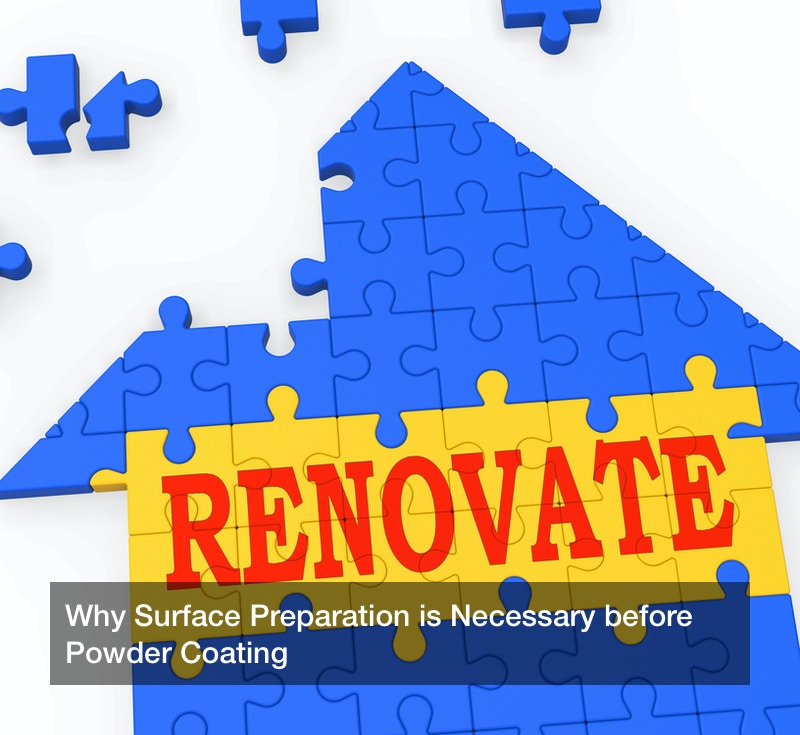Powder coating has become a suitable choice for consumer products. From kitchen appliances to industrial goods, it provides an extra layer of protection and adds to the beauty of many useful items.
There are two main reasons for coating these items; aesthetics and as a shield from external elements. If you want to maximize the quality of the professional finish, you need to prepare the surface using the right media and procedure.
You may choose to apply sandblasting or chemical cleaning, depending on your specific circumstances. In this article, we look at the importance of preparing the surface and the techniques commonly applied for cleaning.
Importance of Initial Preparation
The cleaner the surface, the more the adhesion will be for powder coating. Removing impurities from the material will also reduce the risk of peeling, cracking, bumps developing.
For preparation and cleaning to be effective, it is important to identify the substrate. The material, as well as its surface properties, needs to be carefully considered since they often affect the quality of the finish.
The assembly of the item should be evaluated for inconsistencies. Welded areas can reduce the adhesion of the enhanced powder coating. Other contaminants common in industrial plants that are often problematic include oil, grease, dirt, grime, and soil.
Depending on the type of material, the most common methods usually fall under either chemical cleaning or sandblasting.
Chemical Cleaning
Different types of chemicals can serve as cleaners for surfaces before applying a liquid coating. They can be either acidic, alkaline, a solvent or emulsion agent. The type of debris on the surface will ultimately determine the type of solution to use.
Alkaline cleaners are the most cost-effective method of removing dirt from a metal surface. The most common process is called saponification where the dirt is turned into a soap. The condition is that the surface should have carboxylic acid which can react with the alkaline.
However, they are not suitable for ferrous metals. The process may involve a sodium hydroxide base which often leaves marks on the zinc and aluminum.
Cleaning with acids is less common than using an alkaline solution. Alkaline cleaners are more effective at eliminating organic grime. Acids are often utilized in the elimination of oxides on metals. Otherwise, alloys of carbon, such as steel, tend to develop inconsistencies.
Mechanical Sandblasting
Sandblasting can be said to be the removal of debris through abrasive force applied to the material. It is useful for turning rough surfaces into smooth materials suitable for liquid coating.
Sandblasting utilizes cleaning media to provide the pressure and force, necessary to smoothen the surface. The media chosen can vary from mild to abrasive in its capacity to clean. Technicians ought to choose the cleaning agent carefully to avoid damaging the material.
The application of pressure on the surface can be through an air compressor or a spinning wheel. An example of a mild sandblast process is bead-blasting. It involves the use of a glass media to remove soil deposits without damaging the material. It is useful for removing paint or calcium films.
Abrasive techniques are suitable for alloys and, particularly, various grades of steel. They do not respond to alkaline or other common chemical cleaning methods. But using grit is considered to be effective for removing oxide stains and grime on High-Strength Low-alloys.
It may still be necessary to use agents on the surface if they were previously galvanized or coated with paint. Since most steel grades do not come with an extra coat sandblasting should be sufficient for most applications. The liquid coating should adhere to the surface once the process is complete.
In Conclusion
Surface preparation is critical if you are to get an aesthetically pleasing and professional finish after powder coating. You need to consider factors such as safety, type of material, and the suitability of the process. The choice of cleaning method will determine how the final coat will adhere to the metal.





